If you are searching for the best substitute for gelatin in baking recipes, look no further! Whether you want to substitute the gelatin in your recipe with agar agar, arrowroot, or another vegan gel, there is definitely something for you! Gelatin is a baking staple that is used to make gummy desserts, mousse cakes, no-bake cheesecakes, panna cotta, marshmallows and so much more!
You may wonder what can I use if I don't have gelatin? Replacing gelatin in a recipe can be tricky, but I’m here to help answer all your questions and walk you through the best substitution options! Consider this article your Gelatin 101 Guide that covers everything you must know about gelatin, gelatin alternatives, the best substitutions, and how they work in a recipe.
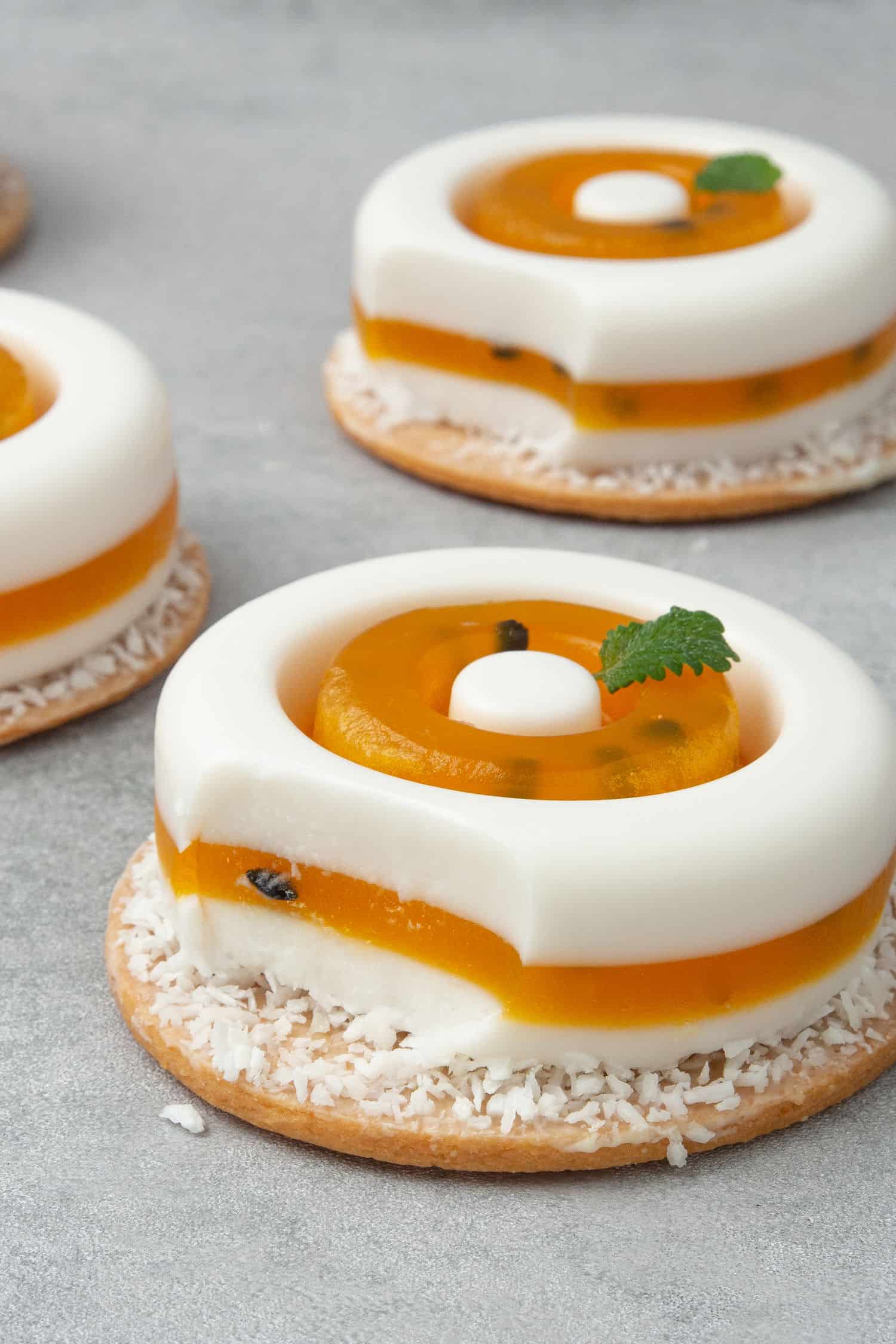
Jump to:
- 📖 What is gelatin
- 📝 Different types of gelatin - sheets vs powder
- 📝 Different types of gelatin - bloom strenght
- 🌟 Gelatin benefits in baking
- 👩🍳 Different types of gelatin substitutes
- 1. Agar Agar
- 2. Kudzu
- 3. Pectin
- 4. Vegan Jel
- 5. Instant Clear Gel
- 6. Guar Gum
- 7. Xanthan Gum
- 8. Cornstarch
- 9. Arrowroot or Tapioca Starch
- 10. Carrageenan
- ❓ FAQs
- 🎓 Conclusions
- More baking guides
📖 What is gelatin
One must first understand what gelatin is, in order to be able to substitute it in different recipes. It is a flavorless, colorless, and clear protein used as a food ingredient all around the world. It is a key factor in many recipes to thicken and/or create a gel-like texture.
In terms of food and baking, gelatin is a common ingredient found in gummy candies, marshmallows, broths, and much more you do not even expect like ice creams, etc.
There are various types of gelatin, some that are derived from cows and pigs but there is also gelatin that comes from fish as a by-product. However, don´t worry, in my article below I will provide several gelatin alternatives that are suitable for vegetarians or vegans.

📝 Different types of gelatin - sheets vs powder
Gelatin generally comes in two forms, sheet and powder form. Both the gelatin sheets and gelatin powder are from the same animal collagen.
- Gelatin Sheet: Like myself, most pastry chefs tend to opt for gelatin sheets also called gelatin leaves. Sheets are also super easy to handle / bloom without adding extra liquid to the dessert and the results are cleaner tasting, perfectly transparent
- Gelatin Powder: Gelatin Powder is technically the same product as sheets but has been dried and broken down into small individual grains. This is a nice option too to use and it will get dispersed evenly throughout a recipe since it’s tiny granules.
Gelatin powder and gelatin sheets can be used interchangeable by simply taking their weight. For example, if the recipe calls for 3 leaves of 1.7g gelatin sheets, use 3x1.7g=5.1g gelatin powder. The calculation assumes taking the same bloom strength gelatin, see details further below.
Gelatin needs to be activated by liquid to work. This process is called “Blooming gelatin”.
How to bloom gelatin
How to bloom gelatin powder:
- To bloom gelatin powder, you’d simply sprinkle the powder over a small amount of room temperature or cold water and allow it to sit for 3-5 minutes until it becomes thick and jiggly. For this hydration process use about 6x more water (in volume) than gelatin powder
- Then, gently the mixture either in the microwave or on the stove so that the gelatin can dissolve. Make sure that you do not boil the gelatin at this point, only heat it up.
- Once dissolved and heated, the gelatin can be added to your recipe! Usually, it is worth slightly letting the mixture cool slightly to avoid melting your other recipe ingredients. But do not fully cool it as it will set again at room temperature.
How to bloom gelatin sheets:
- Place gelatin sheets into a large cup of cold water for 3-5 minutes until the sheets become soft
- If the sheets stick together, move them apart to allow more water absorption
- Once gelatin sheets are soft, squeeze excess water out from them, then they can be added to the rest of the recipe ingredients. Typically, you would heat some liquid and pop the gelatin sheets into the hot liquid one by one, stirring after each.
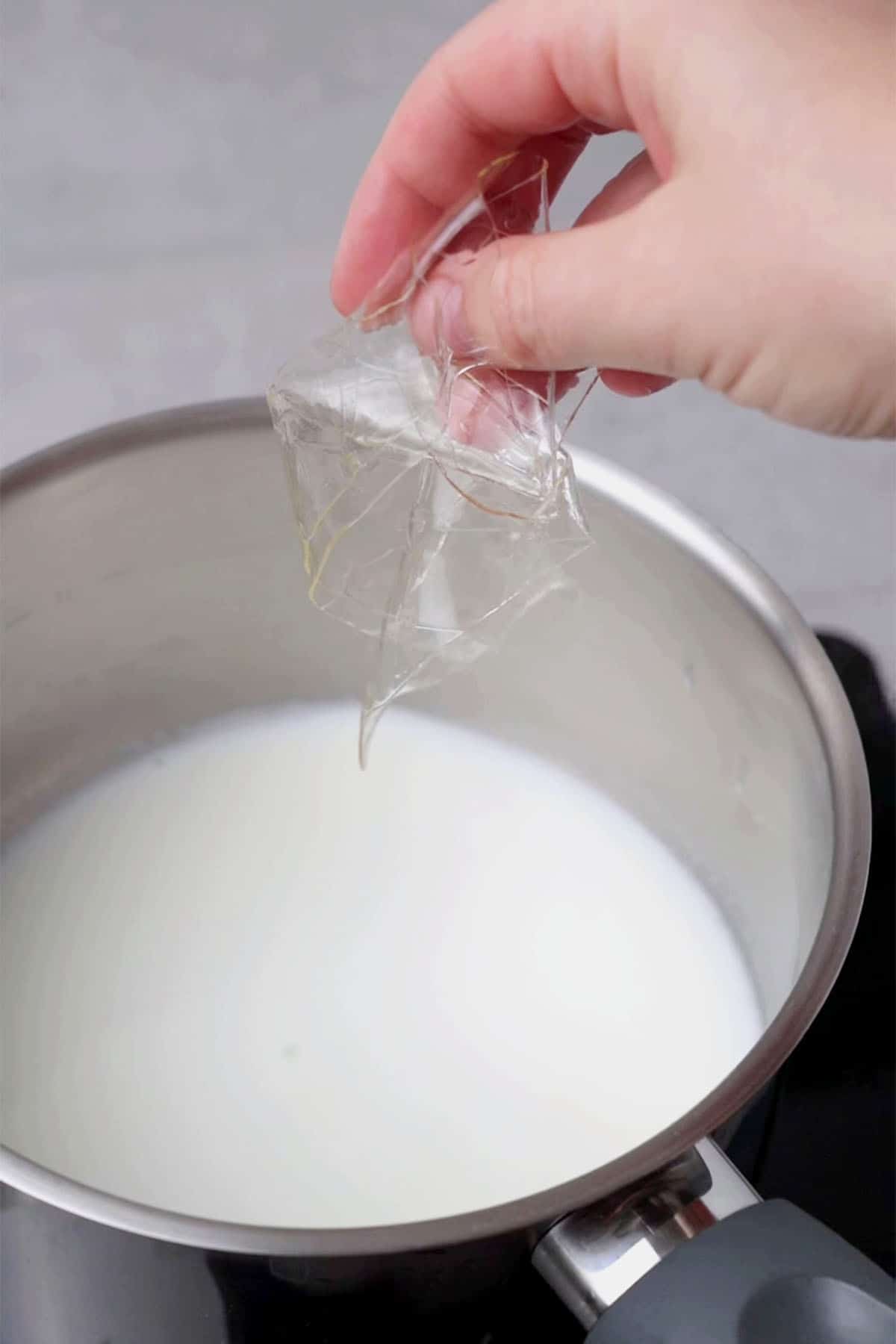
📝 Different types of gelatin - bloom strenght
Each type of gelatin has a different bloom strength (setting power) which means it will have different effectiveness when bloomed. The higher the bloom value the higher the melting and gelling points are, with a shorter gelling time.
Here is a quick table to show which gelatin has a high vs a low bloom strength and the typical weight.
| Name | Weight per sheet (gram) | Bloom Strength |
| Bronze | 3.3 | 125-155 |
| Silver | 2.5 | 160 |
| Gold | 3 | 190-220 |
| Platinum | 1.7 | 235-265 |
In all my recipes, I mention the weight and bloom strength of the gelatin I use, so if needed, it can be substituted with equal weight and bloom strength of gelatin powder. When you purchase gelatin, look for the information above in order to correctly measure the gelatin you need.
🌟 Gelatin benefits in baking
Gelatin plays a huge role in the outcome of baked goods, whether that be to add a bouncy effect to a marshmallow, stabilize a no-bake cheesecake, thicken a pudding, or provide the gummy factor to gummy bears.
As mentioned earlier, gelatin is used mostly as a thickening agent in baking, and using different amounts or types of gelatin in a recipe can affect the consistency of desserts.
Here is how gelatin gives body and shape to popular desserts, in slightly different ways:
- Stable, fluffy & firm Texture- mousse, cheesecake, pudding, ice cream desserts, Bavarian creams, sweet cold soufflés
- Gummy - gummy candies, jello
- Spongy - marshmallows
Stability, fluffiness, firmness, gummy texture, and spongy texture are all benefits of gelatin that can be achieved through using varying amounts and bloom strengths of gelatin.
👩🍳 Different types of gelatin substitutes
You may be wondering, what can substitute gelatin? And what gelatin substitutes for gelatin are the best? Substituting gelatin can be difficult, but not impossible!
If you want to replace gelatin in cooking and baking, there are some excellent options on the market that make a very good swap and others that are worth giving a try on a recipe-to-recipe basis.
We always want to make sure we are working to mimic unflavored gelatin, not the flavored versions since that will affect your final recipe. It’s important to think outside the box when it comes to what can you use instead of gelatin. Ask yourself, what is the alternative to gelatin?
Unlike animal-derived gelatin, other gelatin substitutes may only yield 1 or 2 benefits, which means they may only be effective in certain recipes. In this article, we will discuss what are substitutes for gelatin & how to use them!
What can you use as a substitute for gelatin: Agar Agar, Kudzu, Pectin, Cornstarch, Vegan Jel, Guar Gum, Xanthan Gum, Arrowroot or Tapioca Starch, Instant Clear Gel, and Carrageenan. Each of these options is worth exploring and experimenting with since they do work wonders in many recipes!
Before we move forward, I want to highlight that most gelatin substitutes are vegans and vegetarians! So when I’m asked what is the vegetarian substitute for gelatin, I provide the list below since there isn’t only 1 option; there are many!
1. Agar Agar
If your recipe calls for gelatin, substituting it with agar agar powder is probably the easiest, most common way!
The agar agar substitute is an interesting ingredient. Agar agar comes from red algae (a type of seaweed) in the ocean, therefore making it free of any animal products. Once processed, it comes in agar agar strip form, agar agar flakes form & agar agar powder form, both of which are helpful in baking.
It’s truly a wonderful product that is vegan and works very similarly to gelatin although might produce slightly gummier results vs gelatin, which can be creamier. Using agar agar is rather simple as well. Fun fact, Agar Agar is more potent than gelatin, so you need to use less.
How to use it:
- To activate the thickening of Agar Agar it needs to be brought to a simmer for 1-2 minutes with liquid. Then, whisk vigorously to incorporate it into the liquid or use an emulsion blender to do so.
- Agar Agar is not recommended to be a 1:1 substitute for gelatin, you will want to use less agar agar vs gelatin. Rather many have had success with using half or even a third the amount of agar agar as a recipe would call for gelatin, but experimenting is part of the journey when you are substituting a recipe ingredient. You can also be safe by only using 4g / 1 teaspoon of agar per 1 liter / 4 cups of liquid, depending on the final consistency you are looking for
Agar agar is generally used as a substitute for gelatin in recipes such as the following:
- Panna cotta
- Mousse cakes
- Simple “jelly” cubes
It is also easy to find Agar Agar online on Amazon or in specialty or health food grocery stores!
2. Kudzu
Kudzu is a wonderful gelatin substitute and is also flavorless. Kudzu comes in small white chunks, looking like small pebbles of chalk. It dissolves instantly in water and is activated by bringing it to a simmer and cooking just until dissolved (it can lose its activation if heated for too long). It is traditionally used to make Japanese sweets but also is used to make a warm Pudding or even Mochi.
How to use it:
- It is used in recipes in a ratio of 1 ½ tablespoons of Kudzu starch per 1 cup of water for a sauce.
- To make a thicker pudding-like texture, you would use 2 teaspoons per cup.
Kudzu is generally used in recipes such as the following:
- Chocolate pudding
- Savory sauces
- Thicken a cold custard filling
Kudzu can also be spelled as “Kuzu” so be aware when shopping for it. It can be a bit harder to source, but can usually be found at Amazon in the US.
3. Pectin
Pectin is a particularly interesting gelling agent because it is derived from fruit so it is a vegan alternative! Ever wonder what gives jams and preserves that jelly-like consistency? It is generally from naturally occurring pectin in the fruit being cooked & sometimes additional pectin is added to help it gel even further.
NH Pectin is a special, pastry chefs´favorite ingredient eg. when it comes to making glazes.
Similar to gelatin, pectin is used to provide a gel-like texture. Pectin comes in liquid or powder form.
How to use it:
- Usually, it is recommended to mix pectin with sugar first to ensure even distribution
- Then, the mixture should be dissolved in lukewarm water before being added to the rest if the ingredients according to the recipe
Pectin is generally used as a substitute for gelatin in recipes such as the following:
- Marmalades
- Jams
- Jellies
- Jelly layer on top of a cake
There isn’t an exact ratio of how to substitute gelatin with Pectin, rather it’s more of an experimentation process.
On the opposite spectrum, some have asked, can you substitute gelatin for pectin? In some recipes yes but pectin also yields a softer result than gelatin, so better to stick with pectin if a recipe calls for it.
Pectin is sold at many grocery stores in the baking aisle and can also be purchased online and easily on Amazon.
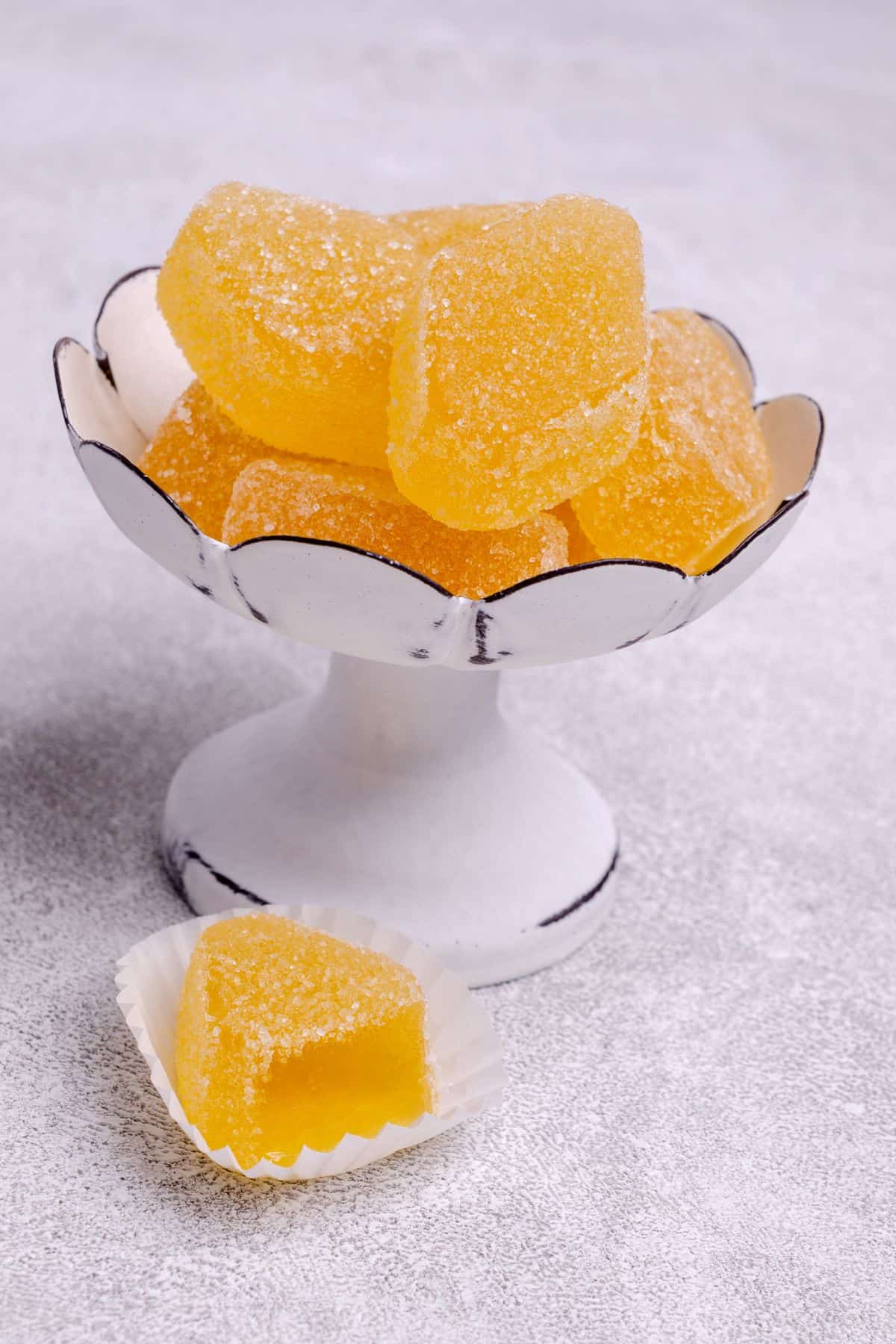
4. Vegan Jel
Many times when people ask me “what can we substitute for gelatin” my go-to answer is Vegan Jel or Vegan gel!
Vegan Jel is the simplest, straightforward option that is created to be used as a gelatin substitute. It is a composed product rather than a singular ingredient. This product tries to mimic the functions of store-bought gelatin, so it can be used interchangeably in most recipes.
Vegan Jel is usually made up of Vegetable Gum; Citric Acid; Tapioca Dextrin; Calcium Phosphate; Potassium Citrate. There are different brands sold in stores and online with varying names and ingredient lists. Consider that sometimes it’s referred to as Vegan Jel and other times it is written as “Jel Dessert”. Always check it has the vegan symbol to confirm that it is truly a Vegan Jel.
Please note that most of the Vegan Jel options will function nearly the same as a gelatin packet. It is a rather suitable substitute for gelatin in marshmallows for example.
How to use it:
- To activate, mix the powder with boiling water or as directed on the box
- Then add to your dessert & let it set in the fridge to become firm
Vegan Jel is generally used as a substitute for gelatin in recipes such as the following:
- Jello
- Marshmallows
- Other commonly made Jello-based desserts
Vegan Jel can usually be found most easily online and on Amazon either in a clear flavorless option or as a flavored “Jello”.
5. Instant Clear Gel
Although this product may sound similar to the Vegan Jel, it is not the same. Many times it is referred to as “instant clear gel” or simply “clearjel”. It is a wonderful gelatin substitute in many recipes made from modified food starch, many times a type of modified corn starch.
How to use it:
- In general, follow the directions on the box as there are two variations sold for different uses: “cook” and “no cook”
Both of these options are formulated for different baking applications.
The “cook” version is generally used in recipes such as the following:
- Sauces
- Fruit pie fillings
The “no-cook” version is generally used in recipes such as the following:
- Stabilized whipped cream
- No bake cheesecake
On the contrary, you may wonder can I substitute gelatin for clear jelly since they’re very similar? If you happen to want to use gelatin in a recipe that calls for Clear Gel, that should work just fine! It is still a matter of testing out the recipe and seeing what ratios work best.
Instant Clear Gel is usually used more commercially so it can easily be found online rather than in stores. Buy Instant Clear Gel on Amazon today!
6. Guar Gum
Guar Gum is a thickener, derived from a seed native to Asia, that is similar to gelatin when used in many baked goods. You can more likely find it in store-bought foods, many times used in gluten-free baking too.
It is also a vegetable based product making it an excellent vegan or vegetarian option.
How to use it:
Unlike many gelatin substitutes, Guar Gum does not need to be activated by heat. It is used in most baking recipes by:
- Sift it into the dry ingredients of a recipe. Sifting will remove any clumps.
- Then, add your liquid ingredients to the dry ingredients and mix.
- Bake the batter/dough (if required)
Guar Gum is generally used in recipes such as the following:
- Jelly
- Sauces
- Smoothies
- Ice cream
- Custards
- Pie Filling
- Gluten-free cookies, cakes, bread, muffins, and other baked goods
Guar Gum can be purchased online (such as Amazon) or at a specialty food store.
7. Xanthan Gum
Can I use xanthan gum instead of gelatin? Let’s learn about it!
Xanthan Gum is a commonly used food additive to provide texture to gluten-free baked goods. Similar to gelatin, it is used for stability; Gelatin is a gelling agent, whereas xanthan is a thickening agent. Unlike some of the other substitution options, this is a chemically derived product made in a lab. It is always sold in fine powder form.
Because Xanthan Gum is a soluble fiber made in a lab, it is not able to be broken down in your body. It is not known to make any long-lasting negative effects making it legal in the USA.
How to use it:
- Blend xanthan gum into the liquid you’d like to thicken. Use a blender ideally, but a whisk will also work.
No heating is necessary!
Xanthan Gum is generally used in recipes such as the following:
- Salad dressing
- Gluten-free cookies, cakes, bread, muffins, and other baked goods
- Soups
- Ice cream
- Sauces (sweet & savory)
- Syrups
Xanthan Gum is a very particular ingredient that can’t be easily replaced for another ingredient if your recipe strictly calls for it. When asked can I substitute gelatin for xanthan gum, I’d say it’s not ideal! Sometimes real gelatin is not the way to go.
Xanthan Gum is widely available in the USA and can be ordered online too (you can always buy it on Amazon).
8. Cornstarch
Can cornstarch substitute for gelatin? Oh yessss! On the contrary, can you substitute gelatin for cornstarch? Not really!
Next time you want to substitute gelatin, try corn starch! Cornstarch is a wonderful thickening agent, somewhat similar to gelatin. I will make a disclaimer that it is not the simplest of ingredients to use as a substitute for gelatin and it won’t yield the same exact results. It can work well in some recipes though!
How to use it:
- Cornstarch is simply activated by mixing a 1:1 ratio of cornstarch with water.
- Once mixed, corn starch can be activated by bringing it to a boil for 1-2 minutes, or until it thickens
Cornstarch is generally used in recipes such as the following:
- Sweet and savory sauces
- Pastry cream
- Jelly, Marmalade, Jam
- Cheesecake (debatable, but worth a try)
Cornstarch is a widely available product that can be found at almost any supermarket or online. I wouldn’t jump to using it as a 1:1 substitute for gelatin in most recipes, but it is an ingredient to consider if you’re in a bind and need a substitution to try.
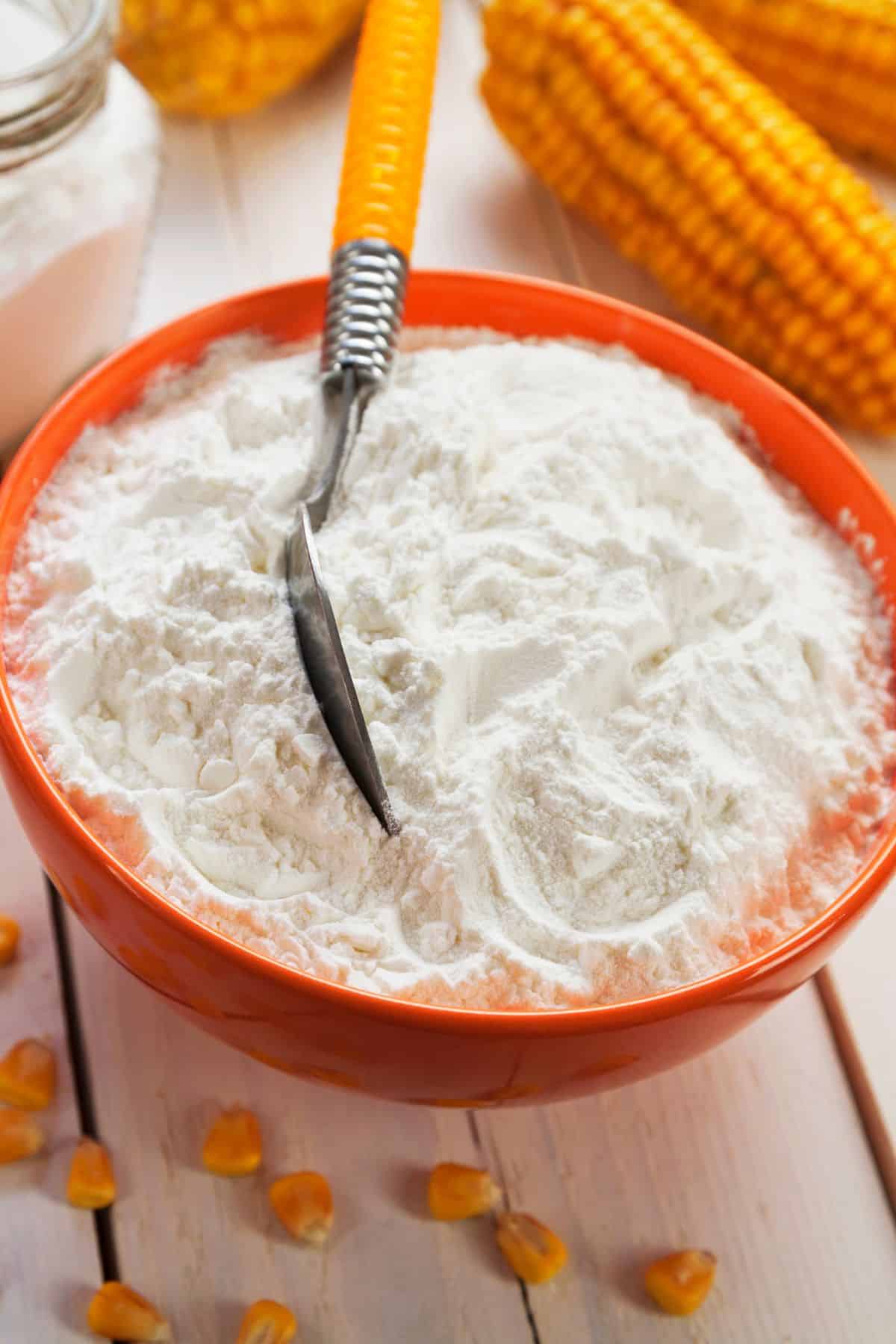
9. Arrowroot or Tapioca Starch
Arrowroot Starch and Tapioca Starch are different products, but I’ve lumped them together in this list because they can accomplish nearly the same thing, especially when used in small amounts. Both of these ingredients make an excellent substitute for one another as well as serve a similar function to gelatin in specific applications.
How to use it:
Both arrowroot and tapioca starch can be activated in these two ways:
- For Oven-Baked Goods: Mix the starch into the dry ingredients of a baked good recipe. Then, proceed with the recipe by adding the liquid ingredients or vice versa. The starch will be activated once baked.
- For sauces, soups, and stovetop cooking: Create a slurry by mixing it with equal parts water to dissolve.
The recommended ratio for gelatin substitute is 2 teaspoons of either starch for 1¼ teaspoon of powdered gelatin, but it is always best to experiment with the actual recipe.
These starches are generally used in recipes such as the following:
- Sauces
- Jelly (will be a bit thinner than if using gelatin)
Arrowroot Starch and Tapioca Starch can usually be found in the gluten-free baking section in most grocery stores or in a Health Food Store (in person or online). Easily order Arrowroot Starch and Tapioca Starch on Amazon.
10. Carrageenan
Carrageenan is a popular product used in many commercial foods to help set and stabilize the food. It is made from Irish Moss, a type of dried-out seaweed. Similar to Xanthan Gum, Carrageenan is known to be linked to some gastrointestinal issues but is deemed safe and legal in the USA.
Have you ever wondered what is the best substitute for gelatin in mousse? The answer is Carrageenan, although a special reformulation of the recipe is definitely needed. Carrageenan acts similar to Gelatin in the way that it is flavorless and helps food set up in a thickened manner (not as firm as gelatin though).
How to use it:
- Blend carrageenan into the liquid you’d like to thicken. Use a blender ideally, but a whisk will also work.
- No heating is necessary!
Carrageenan is not a 1-to-1 substitute for gelatin, so some experimentation would be necessary for any chef or home cook.
Carrageenan is generally used in recipes such as the following:
- Mousses
- Soups
- Plant-based milks
- Plant-based cheeses
- Ice cream
- Pudding
- Creamers
It can easily be purchased online, but is not typically found in grocery stores. You can find different variations of carrageenan for varying uses on Amazon.
❓ FAQs
Essentially no. Although gelatin is derived from animal collagen, it will not yield the same results if you simply purchase “collagen” at the store.
It nearly does! As mentioned in the above Substitutions there are many options for nearly similar results using Instant Clear Gel and Vegan Jel. They aren’t derived from animal collagen like real gelatin, but they seem to be the closest substitutes.
It doesn’t! Vegan gelatin is derived from plants or starches. Collagen can only be derived from animals.
Absolutely! You can absolutely use a vegan gelatin option, such as Vegan Jel as a perfect substitute for gelatin.
Based on my research and experimentation it seems that Instant Clear Gel is the best substitute for creating a stabilized whipped cream.
There are many forms of vegetarian gelatin powder options. Be sure to read the back of the box that it comes in and carefully follow the directions and read the applications for the best results.
I have found that Agar Agar and Pectin make the best substitutes for gummy recipes.
Agar Agar seems to be your best bet in a home kitchen! Commercially carrageenan has been used to make mousses and can be used at home with a lot of experimentation and trial & error.
This is a tricky question because it truly does depend on the type of recipe you are making. Each of the gelatin substitutions above list the different applications and for which recipes they work best in so you can refer to it as a guide on a recipe-by-recipe basis.
This question doesn’t have a clear answer because it depends on the type of recipe you are making. Each of the gelatin substitutions above list the different recipes they work best in so you can refer to it as a guide on a recipe-by-recipe basis.
🎓 Conclusions
Based on my experimentation over the years and extensive research, it seems that there is a viable gelatin alternative for each type of recipe. Of course, it would be difficult to find one item that equally works in the way that gelatin does, but it’s possible to find one that best suits your recipe!
Having fun in the kitchen and seeing what works can be super rewarding and it’s always exciting to discover something new! Maybe you’ll make some Agar Agar gummies or a creamy xanthan gum dressing and surprise yourself with how wonderful these ingredients work.
More baking guides
- 25+ Different Types Of Frosting For Cakes and Cupcakes
- 22 Delicious Retro Desserts That Are Becoming Popular Again
- How To Pasteurize Eggs For Tiramisu, Ceasar Salad Dressing, Any Sauce and More
- The Ultimate Egg Wash Tutorial: My Favorite 1-Minute Egg Wash Recipe and 21 Egg Wash Alternatives For Any Needs
- Why Are My Cookies Flat? And Learn How To Fix Them!
- Chocolate Buttercream Frosting
- Raspberry Cream Cheese Frosting
- Ermine Frosting



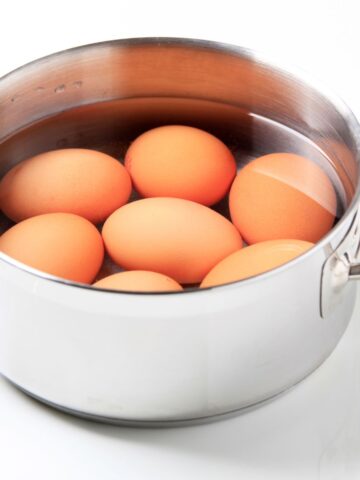

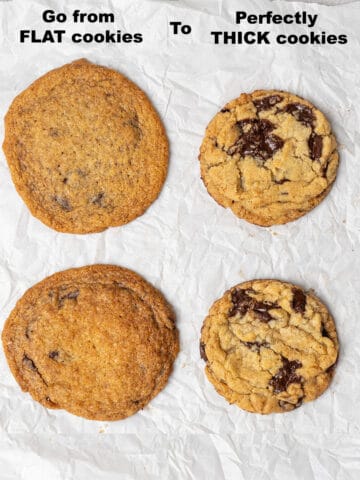


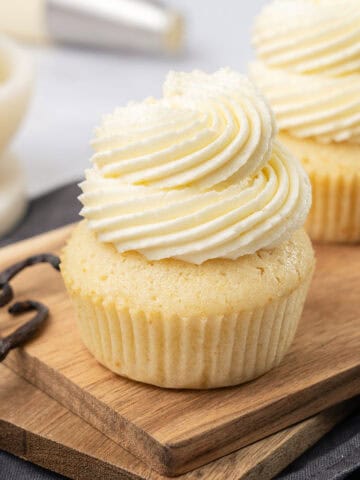
Angela
If a recipe says 20g powdered gelatin (200 bloom) but I cannot find powdered gelatin with strength marked anywhere, what would the equivalent be in gelatine leaves?
It’s for a mousse cake and I want the mousse to be the right consistency.
Kata
The only difference between powder and sheet gelatin is the format. You will want to replace 20g powdered gelatin with 20g sheet gelatin of the same strength. So, if one sheet is let´s say 2g, use 10x.